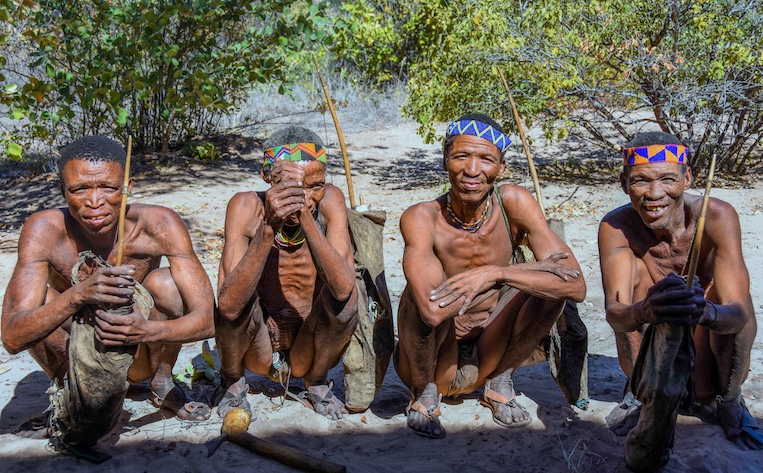
The indigenous Sans Bushmen of the Kalahari. Living in southern Africa in Botswana, Namibia, South Africa, Angola and Zimbabwe, they are an ancient people that go back about 45,000 years. They are considered to be the oldest ethnic group in the world. Photo by Karin Pezo
By Karin Leperi Pezo
Whether by air, water or land, an African safari can offer some of the most unique wildlife experiences on the planet. Each mode provides a different perspective and distinct species. Change your view to experience the many unique environments of Africa.
Africa has some of the most amazing wildlife sightings in their natural habitat anywhere on our planet. From wild lions, leopards, elephants, buffalo, and rhinos – also known as the “Big Five” to a plethora of unique creatures that includes the Dik Dik, Hyena, giraffes, and a biodiversity of birds, a safari will not only wow you, but humble you as well.
It used to be that when someone said they were going on an African safari, the image conjured up was a land-based jeep tour on the great plains of the Serengeti or one of the crowded national parks in South Africa. That would have been accurate. But not anymore.
The best countries for African safaris range from Kenya and Tanzania to Namibia, South Africa, and a personal favorite: Botswana. They cover African bush, desert, savannah, plains, forest, montane, and delta.
Safaris now encompass different interests, perspectives, and modes of transportation. Special interests might include birders, painters and photographers to wildlife enthusiasts and keepers of bucket lists. Or even family and generational get-togethers.
Changing Transportation Changes Perspective
Bird’s Eye View
Want an elevated experience? Try an air safari. The real value is the time saved in transporting from one location to another. You can cover lots more territory and fly into remote landing strips not always accessible by road. If you go by motorized vehicle, it might take ten times as long with the potential for road closures and hazards.
I used an inheritance to book an air safari in Africa: I never regretted a moment as it proved to be life life-changing experience for me. I flew by private air safari from South Africa to Namibia, Zambia, and Botswana. The territory I covered in one week would have easily taken me a month or two if I went on land.
A less expensive alternative to private charter is to take advantage of hot air balloons or helicopter options.
Fluid Dynamics
Perhaps a water-based safari? Many boat-based safaris offer a different perspective by viewing animals from the water like in Botswana on the Chobe River and Okavango Delta. Try a traditional canoe in Botswana for up-close experiences with frogs, dragonflies, and blooming aquatic flowers.
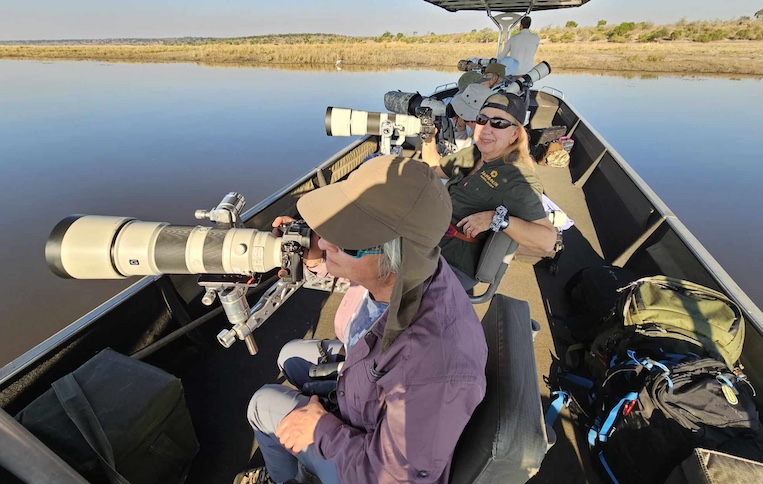
A specially outfitted boat for photographers on the Chobe River is unique to the Pangolin Chobe Lodge in Botswana. The 14-room hotel on a plateau overlooking the Chobe River caters to wildlife photographers of all levels.
Angela Sanchez, a wildlife/nature photographer, as well as retired microbiologist and Health Officer from the Public Health Service, found water-based safaris to be “ground-breaking.”
This is what Sanchez had to say:
“My recent trip to Botswana involved lots of water. The Chobe River and the Okavango Delta are welcome oases in the dry Kalahari Desert. Water is crucial to life, so the Chobe River and Okavango Delta attract many species of animals. Exploring these areas by boat or mokoro provides no shortage of opportunities to experience hippos and elephants who love being in the water. The abundance of water also attracts crocodiles and hundreds of species of incredible birds who take advantage of the rich source of foods like fish and frogs, as well as many other types of animals mulling around the waters like lions, giraffes and baboons.”
Terra Firma
Land-based safaris are the more traditional adventures. This can be in a jeep or even as a walking tour. Some of the best game reserves include Maasai Mara National Reserve in Kenya, Serengeti National Park in Tanzania, Ngorongoro Conservation Area in Tanzania, Amboseli National Park in Kenya, Kruger National Park in South Africa, and Etosha National Park in Namibia,
As safaris are adventurous and somewhat expeditionary, some of the more mundane but essential information is about safari bathrooms. In mixed jeeps, guys go to the front while ladies may go to the rear. But not until the guide goes around the jeep and claps his hands. Just to make sure there are no sleeping lions lazing in the nearby grasses.
Safari humor often pops up when least expected. Like the time a teenage male baboon stood in front of our jeep on two legs – as if he were human. His alpha tendencies told us that for the moment, he owned the dirt road. His fully erect penile profile was hard to miss. Hormones were clearly at play. What was even more startling was when he grabbed his penis with his hand and started to masturbate for the safari audience.
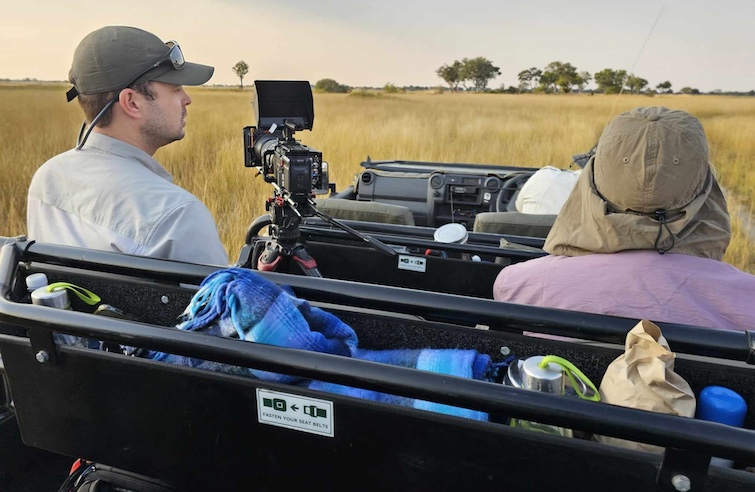
Land safari by jeep is considered the more traditional African safari.
African Safaris by Country
Each country has unique safari opportunities and biodiversity to offer. Most encounters include the Big 5 game animals: lion, leopard, rhinoceros, elephant, and African buffalo. Some will have greater concentrations of one species over another depending on the habitat. Here are some of the highlights of African safaris by country.
Botswana – Botswana is one-of-a-kind with its unique environment that includes Chobe National Park, Okavango Delta, and The Kalahari. It’s an area of wetlands, marsh, and estuaries to the dry sands of the Kalahari. Safaris here tend to be pricier, reflecting the more remote nature of wildlife and the additional costs of getting there. If you can afford it, this is like the Disneyland of safaris. Here you can maximize your “water” viewing, entirely different than what you will see on land.
The Chobe River near the northern border of Botswana, has some of best game viewing in Africa. It includes the Big 5 plus wild dogs, hippos, and the rare puku antelope. The biggest elephant population in the world resides here. About 120,000 strong. Many will be at the river edge or playing in the water.
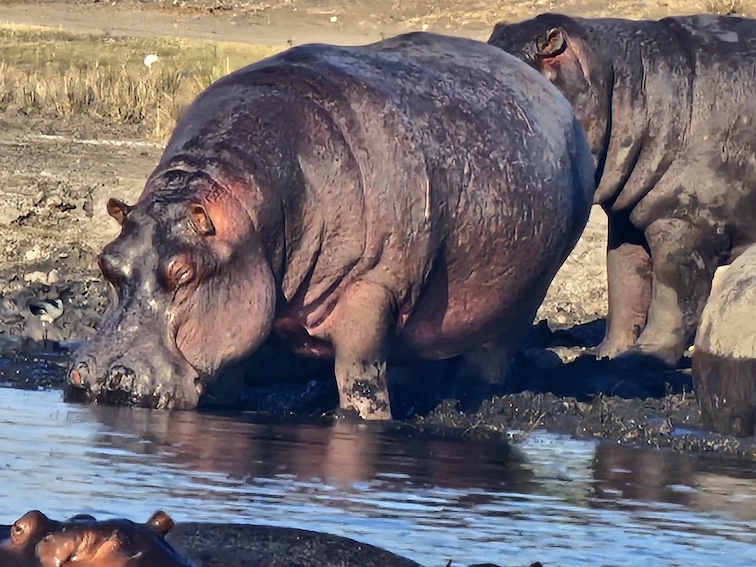
Several hippopotamuses come to the river’s edge for a long drink in the early morning light. Their conservation status is listed as vulnerable. Though they look like large pigs, their closest living relatives are dolphins, whales, and porpoises.
There are two types of game-viewing experiences here: a land-based safari drive and a boat trip on Chobe. It excels in water-based experiences as it is considered one of the best water-based animal spotting destinations in the world. Independent people is that you can also do self-guided safaris in the park.
For Sanchez, the allure of the Chobe River and Okavango Delta was refreshingly different. “In addition to exploration by water, I found that simply sleeping in the tented camps surrounded by the waters of the Okavango Delta allowed me to experience the wildlife in a special way. One of my favorite memories was when I would wake up at night to be serenaded by soft grunts from hippos and the sounds of elephants gently walking through the water near my tent.”
The Okavango Delta – There are fertile waters to the south, an inland delta of the Kalahari Desert. It is a huge oasis and Africa’s largest inland delta. Safaris tend to be high-end due to the remoteness of the area. Be sure to take a Mokoro – a traditional dug-out canoe on Okavango Delta. You will discover a whole new world of frogs, butterflies, and insects.
Kenya – This country is replete with national parks, national reserves, and private game reserves. It also harbors Masai Mara National Park, the most visited park in the whole country. For those on a budget, Kenya safaris are generally less expensive than those in neighboring Tanzania.
Maasai Mara National Reserve – This area of grass-laden plains and gently rolling hills borders Tanzania and is in the southwestern corner of Kenya. About 1.5 million wildebeest, zebras, and other herbivores migrate annually from Tanzania’s Serengeti National Park to the green grasses and watering holes of Masai Mara from July through October. Along the way they are prey for predators that include lions, cheetahs, leopards, hyenas, wild dogs, and jackals. Once the migrating masses get to the Mara River, they must brave hungry crocodiles as the final hurdle before they reach life-sustaining grasses and water.
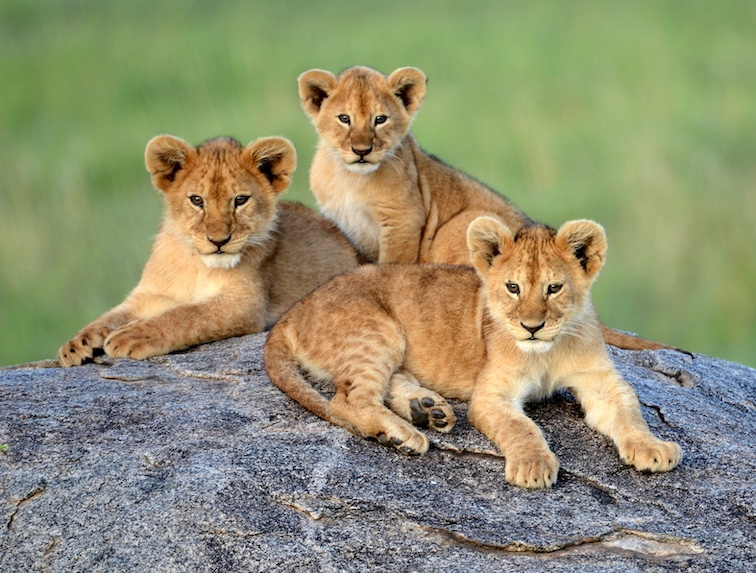
Three young lion cubs take a moment from their playfulness and rest on a rock. The lion is an apex and keystone predator. It’s conservation status is listed as vulnerable. Photo by Karin Leperi Pezo
Along the way, tiny villages of the Maasai people dot the countryside. They are noted for their red cloaks and tall stature. (They are one of the tallest people in the world, with an average height of 6.25 feet.) Their Adumu dance is an energetic jumping festivity where they leap many feet into the air. Each warrior tries to outdo the other.
Be sure you take a hot air balloon ride over the plains and river to observe the Great Migration from above. This aerial perspective will instantly reveal to you the massiveness of this prodigious migration.
Samburu National Reserve – Close to the Equator, vegetation varies in this Reserve. Expect shrubs and dry grassland to palm trees. Wildlife sightings might include Grevy’s zebras, gerenuks, reticulated giraffes, blue-legged Somali ostriches, and oryxes.
Lake Nakuru National Park – This is where to go for the flamingos. But expect encounters with hippos, waterbucks, black rhinos, white rhinos, elands, impalas, and many birds.
Amboseli National Park – Elephant territory at its best, the park includes the dry bed of Lake Amboseli, wetlands, and Sulphur springs.
Nairobi National Park – Just south of the city center of Nairobi, game viewing options include driving around the park, or a safari walk. With over 400 bird species, wildlife sightings include lions, hyenas, buffaloes, giraffes, warthogs, gazelles, zebras, and ostriches.
Namibia – The Namib Desert, known as the “living Desert,” is one of the oldest deserts on earth. Starkly desolate with 800-year-old skeleton trees, red soil, white salt pans, and deep blue skies, it beckons many photographers to capture the bold landscape palette that looks more like Mars than Earth. Here you can also experience some of the oldest cultures in the world such as the San Bushmen and the Himba people.
Etosha National Park is in the far north and dominated by an expansive salt pan. This was what is left from ancient lakes that dried up in the parched environment. This is one of my favorite places to photograph, not for the wildlife, but for the desert landscape. You can also expect to find desert-adapted wildlife like mountain zebra and elephants, and also the greatest concentration of the rare black rhino.
There are advantages that an arid environment offers when it comes to wildlife viewing on safari. The most important is that wildlife is more concentrated at fewer watering holes, thus attracting a variety of species in a very concentrated area.
Chantelle Baggenstos, Adventure Travel Specialist for Aaron’s Photo Tours, says it is one of the most amazing places she has ever been. “I was truly in awe of the stark beauty this timeless place offers,” says Baggenstos. “And the wildlife reflects the harsh terrain. Expect to see many springboks, zebras, and blue wildebeest. You may also find elephants, lions, cheetahs, and black rhinos during your safari.”
This part of the world is more difficult to access and tends to be off the beaten track. The good news is that it is also less crowded. However, there are fewer lodges, so planning and reservations are a necessity.
Experience this remote region by classical safari or even self-drive. Another option is to fly above these ancient lands by light aircraft. Whatever perspective you choose, it will be unforgettable.
South Africa – This is perhaps the most accessible country for wildlife encounters since many international flights come to Johannesburg.
Kruger National Park – This is one of the most well-known safari destinations in the world as it is the largest and oldest national park in the country. The park is over 20,000 sq km and is home to more than 200,000 mammals plus a wide variety of birds, reptiles, and insects. For first-timers, this is the ultimate and most affordable game drive experience. The trade-off is that the crowds are greater. This is where you can see African wild dogs, giraffes, zebras, hippos, and cheetahs.
Accommodations run from government rest camps to top safari lodges near the borders with neighboring African countries. Self-drive options are available.
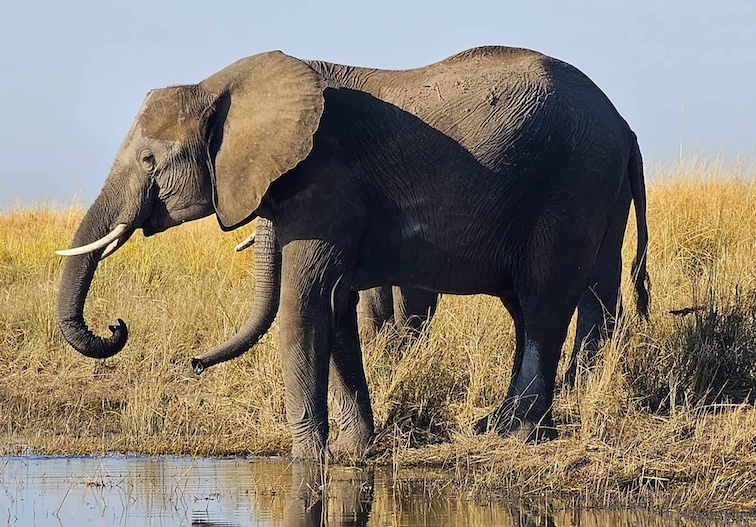
Elephants are the largest living land animal in the world. They like to stay near water and are considered herbivorous. The African bush elephant is listed as Endangered.
Addo Elephant Park, Pumba Private Reserve – Private reserves generally provide closer encounters but with less packs or herds. It’s because the reserves are usually fenced and have less land. So, less wildlife can be supported. All safari drives are guided.
Tanzania – This East African country offers a range of biodiversity and unique geographic features. From savannah, dense forest and African bush to wetlands and volcanic craters, the range of safari experiences is nothing short of stupendous. However, the opportunities generally come with higher price tags than some of the neighboring countries.
Serengeti National Park (World Heritage listed Park) – Songs praise the endless plains of the Serengeti and the over-the-top biodiversity. With over 500 species of birds, this area offers sightings of black rhino, buffalo, cheetah, giraffes, eland, elephant, gemsbok, hippo, leopard, lion, and wild dog. It is considered one of the most dramatic game-viewing areas south of the Sahara.
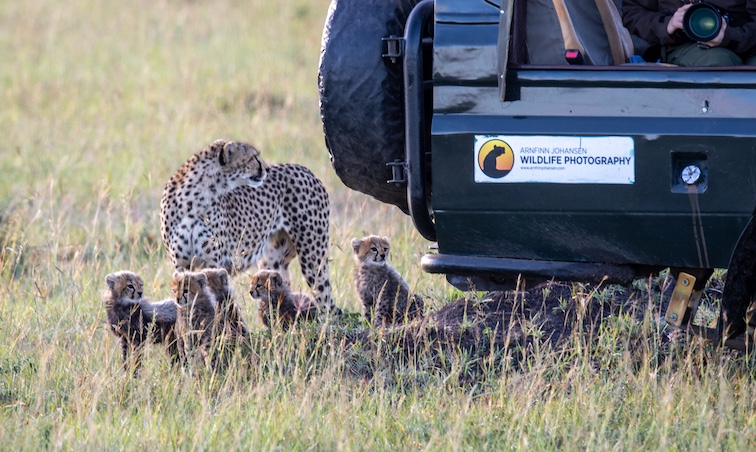
A mother cheetah and her cubs seem oblivious to the jeep. They are the fastest land animal in the world. Habitat loss, conflict with humans, poaching, and high susceptibility to diseases are continuing threats to their numbers.
Crowds of safari-seekers and photographers come to Tanzania from December to July to witness the world phenomena of the Great Migration. This is an annual pilgrimage of herbivores seeking greener pastures as their older grazing areas have dried up. From June-October a different scene emerges with the focus more on predator vs. prey. This is the dry season.
Ngorongoro Conservation Area – This unique setting is the easiest and most reliable place where you can expect to see the Big 5 sightings. From black rhinos, buffalo, cheetahs, eland, elephants, gemsbok, hippos, leopards, lions, wild dogs, zebra, and flamingos, over 30,000 animals are living inside an extinct volcano. Within the volcanic crater are wetlands, forests, and grasslands, offering biodiversity in a very concentrated area.
Just Go
According to wildlife photographer Lisa Roberti, “Africa offers so many adventures – the typical land safari where the animals in most places completely ignore the vehicle, to unbelievable canoe or boat safaris on the beautiful rivers and lakes. You can even take an adventure in a hot air balloon or helicopter so you can see the beauty from any perspective. Walking safaris add an entirely different dimension to the experience.”
Sanchez was overwhelmed with the abundance of wildlife and photography opportunities. “Experiencing Africa by air, land, or water can provide uniquely interesting perspectives,” she adds. She particularly enjoys the wetlands and water of the Chobe area in Botswana. “I found that exploring Botswana from the water provided an amazing perspective to experience incredible creatures.”
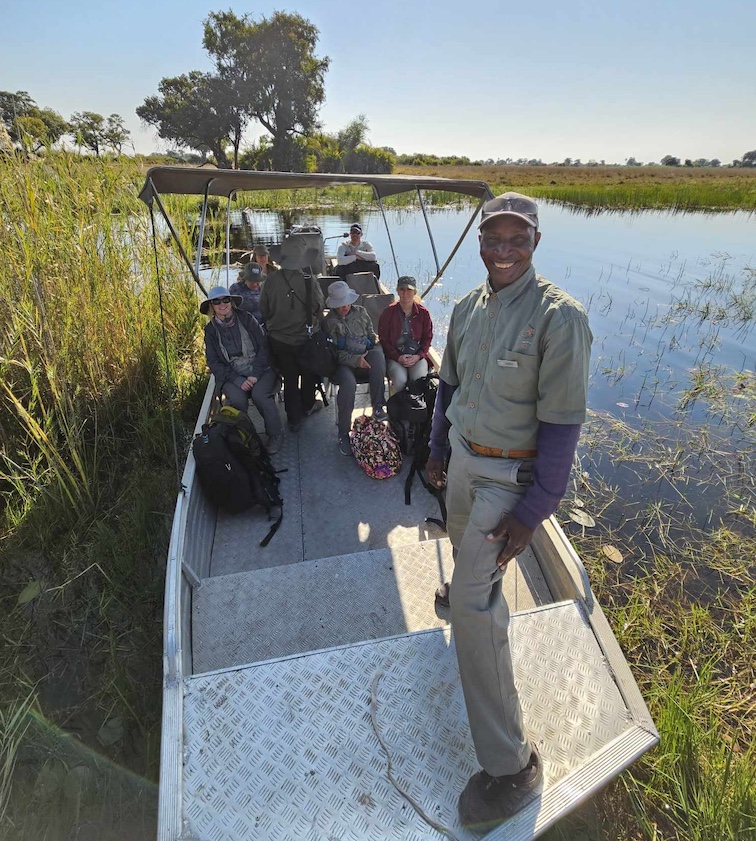
A safari by boat brings a different ecosystem into view, with frogs, fish, butterflies, and marsh birds. Large land animals such as elephants and hippos offer different views and unique opportunities for photographers.
Whether you go by air, land, or water or even mix them up, you need to go experience wildlife while you can and when you can.
When to Go
May-October is generally the dry season in Africa. Because there are fewer watering holes, the chance of seeing wildlife increases as they will congregate at fewer places. In Namibia, the dry season is June – November.
In Tanzania, the Great Migration occurs from December-July, while July–October is when the Great Migration happens in reverse, in Kenya on the Masai Mara.
However, expect prices to be higher and greater crowds when viewing the Great Migration. Safari jeeps may have to jockey for favorable viewing positions. Thank National Geographic for the popularity of this momentous event.
Look For: Each country and region is known for being conducive to certain animals due to the climate, terrain, and environmental considerations.
For example, if you want the best place to see lions, head to Serengeti National Park in Tanzania. This is Big Cat Country. The Masai Mara, the part of the Serengeti ecosystem that lies in Kenya, is also a good place to see Big Cats.
The best place to find cheetah, the fastest land mammal on earth, is open grassy plains, is also in the Serengeti National Park in Tanzania. They share the same habitat as lions, leopards, and hyenas. However, they prefer open grasslands where they can attain top speed in tracking down their prey.
Giraffes can be seen almost anywhere, but one of the best places is Kruger National Park in South Africa. This is where you can set your own pace as the park is host to many self-drivers.
For elephants, head to the Chobe River in Botswana or Tarangire National Park in Tanzania, where the massive baobab trees reign supreme.
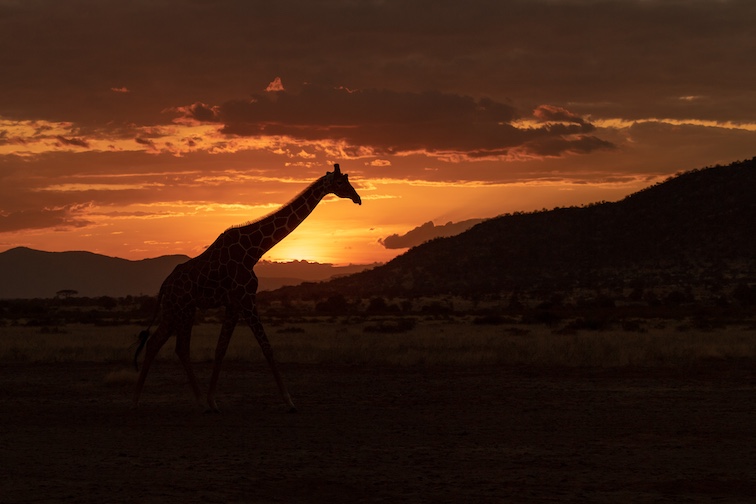
A silhouetted giraffe at sunset is considered an iconic image of an African safari.
And if you want to see wild rhinos, best to choose Etosha National Park in Namibia. (Note that this area is accessible by car and is malaria-free).
For those interested in seeing a diversity of birds, check out Botswana and Zambia. For the highest number of endemic and near-endemic birds, go south to South Africa.
Cost: The cost of photographic safaris depends on your travel mode, when you want to travel, where you want to visit for wildlife, and what level of luxury you would like to experience on your African safari. Visiting outside of the dry season (May–October), especially when you are traveling alone, can be far better value for money with often better wildlife opportunities.
Generally, all-inclusive safari lodges and tents include all meals, snacks, beverages, and alcohol with each meal. Some include laundry. In addition, all game drives are included. However, please note that tips for guides and staff are extra, and in most cases, these people are extremely competent and work very hard for guests. They are dependent on this money for what is still a frugal lifestyle.
Word To The Wise
To avoid the crowds, head for Africa in early spring. Avoid wearing blue or black while in Southern Africa, as the colors attract bloodsucking tsetse flies. Wasps are attracted to red, and it is said the same color distresses lions in Kenya and Tanzania. Safe colors best worn on safari include natural and neutral colors other than white. Avoid camo as many places in Africa reserve this strictly for military purposes.![]()
Karin Leperi Pezo is an award-winning travel journalist and photographer who has visited 126 countries over the years. She presently divides her time between Iquitos, Peru and Las Vegas, Nevada. Previous stories for EWNS looked at Arequipa, Peru, and New Mexico’s chili culture.

